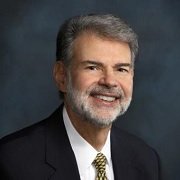 Optimizing Chronic Pain Management through Patient Engagement with Quality of Life Measures: A Randomized Controlled Trial | John C. Licciardone, DO, MS, MBA, holds the Osteopathic Heritage Foundation Richards-Cohen Distinguished Chair in Clinical Research at the University of North Texas Health Science Center. He directs the Osteopathic Research Center and its PRECISION Pain Research Registry, which studies precision medicine and biopsychosocial aspects of pain.
Optimizing Chronic Pain Management through Patient Engagement with Quality of Life Measures: A Randomized Controlled Trial | John C. Licciardone, DO, MS, MBA, holds the Osteopathic Heritage Foundation Richards-Cohen Distinguished Chair in Clinical Research at the University of North Texas Health Science Center. He directs the Osteopathic Research Center and its PRECISION Pain Research Registry, which studies precision medicine and biopsychosocial aspects of pain.
Executive summary: Health-related quality of life (HRQOL) represents a new paradigm for guiding chronic pain management. This study aimed to assess the value and utility of an eHealth intervention for patients with chronic low back pain (CLBP) that was based on HRQOL measures and to assess clinical outcomes associated with its use. Subgroup analyses according to the type of physician (i.e., osteopathic vs. allopathic physician) who provided medical care for CLBP were also conducted to identify and further explore any significant interaction effects.
The Optimizing Chronic Pain Management through Patient Engagement with Quality of Life Measures Trial (OPTIQUAL) was conducted by the Osteopathic Research Center using its Pain Registry for Epidemiological, Clinical, and Interventional Studies and Innovation. Registry participants with CLBP were screened for eligibility from Nov. 2019 through Feb. 2021. Trial participants were randomized to the experimental treatment group that received an eHealth intervention consisting of a HRQOL report and interpretation guide, or to the control treatment group that was placed on a wait list to receive the eHealth intervention after completing the trial. The eHealth intervention on HRQOL involved the SPADE cluster (sleep disturbance, pain interference with activities, anxiety, depression, low energy/fatigue).
The eHealth intervention was assessed by surveying the experimental treatment group about the value and utility of the HRQOL report. The overall value of the report was rated from 0 (worst score) to 100 (best score). The clinical outcome measures in the trial were recommended by the National Institutes of Health Task Force on Research Standards for Chronic Low Back Pain. The primary outcomes involving HRQOL were derived from the SPADE cluster of the Patient-Reported Outcomes Measurement Information System. The two secondary outcome measures involved low back pain intensity and back-related functioning. A numerical rating scale was used to measure low back pain intensity. The Roland-Morris Disability Questionnaire was used to measure back-related disability.
A total of 331 participants were randomized, including 166 and 165 in the experimental and control treatment groups, respectively. The survey for value and utility of the eHealth intervention was completed by 158 (95.2%) of participants randomized to the experimental treatment group. The mean overall value of the report was 63.7 (SD, 26.7). A total of 36 (23%) participants shared the report with the physician who treated their CLBP.
The primary and secondary outcome measures were available for 326 (98.5%) trial completers, including 164 (98.8%) and 162 (98.2%) completers in the experimental and control treatment groups, respectively. There were no significant differences between the experimental and control treatment groups for changes over time in any primary or secondary outcome measure. Correspondingly, there were no clinically important differences between treatment groups on any measure. No serious adverse events were reported during the trial. An intention-to-treat analysis was not performed because there were virtually no missing data attributable to attrition during the trial.
There are at least two possible explanations for the negative findings of the study. The prior feasibility trial recruited participants from August 2019 through January 2020, when all registry participants resided in Texas. However, the OPTIQUAL participants were recruited from the 48 contiguous states and District of Columbia. Nevertheless, it is seems unlikely that clinical outcomes of CLBP would have been substantially affected by this research design enhancement. More likely, the clinical outcomes were impacted by onset of the COVID-19 pandemic on March 13, 2020. Because almost three-fourths of participants in the trial were enrolled during the pandemic, they may have had limited access to CLBP treatments. This may have attenuated differences in outcomes between the experimental and control treatment groups that would otherwise have been observed if the pandemic had not occurred.
There were no significant subgroup differences observed in the reported value and utility of the eHealth intervention, or in the primary or secondary outcome measures, based on the type of physician provider for CLBP. Again, it is possible that decreased access to health care (including osteopathic manipulative treatment) during the COVID-19 pandemic may have attenuated any osteopathic vs. allopathic physician interaction effects relating to the association between treatment group assignment and outcomes for HRQOL, low back pain intensity and back-related functioning.
Despite several strengths attributable to using the registry to conduct this randomized controlled trial, the validity and generalizability of its findings may have been limited by the unforeseen onset and impact of the COVID-19 pandemic shortly after beginning the trial.
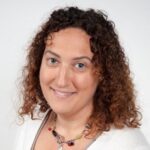 Fluid Dynamics of Concussion in Mixed Martial Arts in a Pilot Randomized Controlled Trial of OMM | Jayme Mancini, DO, PhD, FAWM, graduated from Michigan State University College of Osteopathic Medicine’s (MSUCOM’s) DO/ PhD program in Neuroscience in 2008. She became board-certified in family practice and NMM/OMM and a Fellow of the Academy of Wilderness and Environmental Medicine. She has been a professor at the New York Institute of Technology College of Osteopathic Medicine since 2013, where she teaches osteopathic manipulative medicine (OMM) and has gained 10+ years of clinical practice experience.
Fluid Dynamics of Concussion in Mixed Martial Arts in a Pilot Randomized Controlled Trial of OMM | Jayme Mancini, DO, PhD, FAWM, graduated from Michigan State University College of Osteopathic Medicine’s (MSUCOM’s) DO/ PhD program in Neuroscience in 2008. She became board-certified in family practice and NMM/OMM and a Fellow of the Academy of Wilderness and Environmental Medicine. She has been a professor at the New York Institute of Technology College of Osteopathic Medicine since 2013, where she teaches osteopathic manipulative medicine (OMM) and has gained 10+ years of clinical practice experience. A Molecular Approach to Examining the Immune Stimulatory Impact of Lymphatic Pump Technique | Stephen Andrew DiGiuseppe, PhD, is a virologist who graduated from Louisiana State University Health in Shreveport, Louisiana. He completed his postdoc training at Northwestern University Feinberg School of Medicine in Chicago, Illinois. Dr. DiGiuseppe is an assistant professor at Edward Via Osteopathic Medical School (VCOM) in Monroe, Louisiana. He teaches courses in medical microbiology and shares his passion for pathogenic microbes with students. Dr. DiGiuseppe oversees several research projects focusing on understanding how viruses hijack protein synthesis while subverting the innate immune response and evolutionary adaptations in the transmission of coronaviruses. He has expanded his research focus areas to include collaborations with osteopathic physicians to investigate how osteopathic manipulation can be used to stimulate the immune system to protect against or expedite the clearance of viral infections.
A Molecular Approach to Examining the Immune Stimulatory Impact of Lymphatic Pump Technique | Stephen Andrew DiGiuseppe, PhD, is a virologist who graduated from Louisiana State University Health in Shreveport, Louisiana. He completed his postdoc training at Northwestern University Feinberg School of Medicine in Chicago, Illinois. Dr. DiGiuseppe is an assistant professor at Edward Via Osteopathic Medical School (VCOM) in Monroe, Louisiana. He teaches courses in medical microbiology and shares his passion for pathogenic microbes with students. Dr. DiGiuseppe oversees several research projects focusing on understanding how viruses hijack protein synthesis while subverting the innate immune response and evolutionary adaptations in the transmission of coronaviruses. He has expanded his research focus areas to include collaborations with osteopathic physicians to investigate how osteopathic manipulation can be used to stimulate the immune system to protect against or expedite the clearance of viral infections.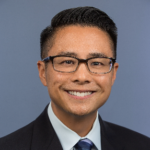 Somatic Dysfunction Characterization Following Acute Cerebrovascular Disease (SOMADC-AC Study) | Alan Yee, DO, is a vascular neurologist and associate professor of neurology at the University of California Davis School of Medicine. He received his osteopathic medical degree from Kansas City University College of Osteopathic Medicine. Dr. Yee completed residencies in internal medicine and neurology at the Cleveland Clinic and Mayo Clinic, respectively, followed by fellowship training in neurocritical care and stroke at the University of California San Francisco. He serves as the associate program director for the neurology residency and vascular neurology fellowship programs. As a core medical educator, he developed interprofessional and post-graduate training curricula to improve neurological care among health professionals. Dr. Yee’s previous research focused on neurologic prognostication in patients with critical brain disease. His current research efforts focus on neurologic medical education, osteopathic examination rater reliability and the association between somatic dysfunction and stroke-related outcomes. In addition to providing acute and critical cerebrovascular care at UC Davis, he established a novel OMM clinic for stroke survivors with chronic physical disability.
Somatic Dysfunction Characterization Following Acute Cerebrovascular Disease (SOMADC-AC Study) | Alan Yee, DO, is a vascular neurologist and associate professor of neurology at the University of California Davis School of Medicine. He received his osteopathic medical degree from Kansas City University College of Osteopathic Medicine. Dr. Yee completed residencies in internal medicine and neurology at the Cleveland Clinic and Mayo Clinic, respectively, followed by fellowship training in neurocritical care and stroke at the University of California San Francisco. He serves as the associate program director for the neurology residency and vascular neurology fellowship programs. As a core medical educator, he developed interprofessional and post-graduate training curricula to improve neurological care among health professionals. Dr. Yee’s previous research focused on neurologic prognostication in patients with critical brain disease. His current research efforts focus on neurologic medical education, osteopathic examination rater reliability and the association between somatic dysfunction and stroke-related outcomes. In addition to providing acute and critical cerebrovascular care at UC Davis, he established a novel OMM clinic for stroke survivors with chronic physical disability.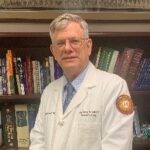 Effectiveness of the Osteopathic Pedal Pump in Reducing Lower Limb Volume in Older Adults with Chronic Leg Lymphedema | Donald Noll, DO, graduated from the A.T. Still University Kirksville College of Osteopathic Medicine in 1987. He completed this internal medicine residency training from the Philadelphia College of Osteopathic Medicine in 1990 and a fellowship in geriatric medicine at the University of Medicine and Dentistry of New Jersey School of Osteopathic Medicine (now a part of Rowan-Virtua School of Osteopathic Medicine) in 1992. His academic research interest has focused on clinical applications of osteopathic manipulations for common health problems in the elderly. He has authored 20 original peer-reviewed papers relating to the use of osteopathic manipulation for pneumonia, chronic obstructive lung disease, influenza vaccine, improving immune function, applications of osteopathic philosophy, falls prevention, leg length discrepancies and, most recently, leg edema. Chronic leg edema and related lymphedema is a common chronic problem in the elderly refractory to conventional treatments that leads to significant morbidity. The osteopathic pedal lymphatic pump is a novel technique that is easy to apply and shows great promise for treating this condition.
Effectiveness of the Osteopathic Pedal Pump in Reducing Lower Limb Volume in Older Adults with Chronic Leg Lymphedema | Donald Noll, DO, graduated from the A.T. Still University Kirksville College of Osteopathic Medicine in 1987. He completed this internal medicine residency training from the Philadelphia College of Osteopathic Medicine in 1990 and a fellowship in geriatric medicine at the University of Medicine and Dentistry of New Jersey School of Osteopathic Medicine (now a part of Rowan-Virtua School of Osteopathic Medicine) in 1992. His academic research interest has focused on clinical applications of osteopathic manipulations for common health problems in the elderly. He has authored 20 original peer-reviewed papers relating to the use of osteopathic manipulation for pneumonia, chronic obstructive lung disease, influenza vaccine, improving immune function, applications of osteopathic philosophy, falls prevention, leg length discrepancies and, most recently, leg edema. Chronic leg edema and related lymphedema is a common chronic problem in the elderly refractory to conventional treatments that leads to significant morbidity. The osteopathic pedal lymphatic pump is a novel technique that is easy to apply and shows great promise for treating this condition. Assessment of the Therapeutic Efficacy of OMT on Chronic Low Back Pain: An Integrated Sonographic and Machine Learning Analysis of Thoracolumbar Fascia Glide Impairment | Albert Kozar, DO, is a primary care sports medicine/NMM-OMM specialist with 20+ years of clinical practice and 15 years of collegiate team physician experience. He is board certified in NMM-OMM, sports medicine and family practice. He has studied MSK ultrasound since 2005 and became nationally certified in 2012 as part of the first pioneering group in the country to take the American Registry of Diagnostic Medical Sonographers (ARDMS) certification exam. Dr. Kozar works with MSKUS, which internationally teaches musculoskeletal ultrasound courses, master classes and cadaver dissection. His primary research projects have been utilizing various modes of ultrasound, grey-scale, doppler and shear-wave elastography, to study patellar tendons in athletes and the thoracolumbar fascia in individuals with low back pain, as well as assess visceral organ function or motion before and after OMT. He has been a national lecturer for the last several years on diagnostic and guided interventions with musculoskeletal ultrasound, OMT, motor control rehabilitation and regenerative medicine. In 2014, Dr. Kozar co-authored a DVD entitled “Fundamentals of Diagnostic Musculoskeletal Ultrasound: An Anatomical Approach to Upper and Lower Extremity, Pelvis, Abdomen and Groin.”
Assessment of the Therapeutic Efficacy of OMT on Chronic Low Back Pain: An Integrated Sonographic and Machine Learning Analysis of Thoracolumbar Fascia Glide Impairment | Albert Kozar, DO, is a primary care sports medicine/NMM-OMM specialist with 20+ years of clinical practice and 15 years of collegiate team physician experience. He is board certified in NMM-OMM, sports medicine and family practice. He has studied MSK ultrasound since 2005 and became nationally certified in 2012 as part of the first pioneering group in the country to take the American Registry of Diagnostic Medical Sonographers (ARDMS) certification exam. Dr. Kozar works with MSKUS, which internationally teaches musculoskeletal ultrasound courses, master classes and cadaver dissection. His primary research projects have been utilizing various modes of ultrasound, grey-scale, doppler and shear-wave elastography, to study patellar tendons in athletes and the thoracolumbar fascia in individuals with low back pain, as well as assess visceral organ function or motion before and after OMT. He has been a national lecturer for the last several years on diagnostic and guided interventions with musculoskeletal ultrasound, OMT, motor control rehabilitation and regenerative medicine. In 2014, Dr. Kozar co-authored a DVD entitled “Fundamentals of Diagnostic Musculoskeletal Ultrasound: An Anatomical Approach to Upper and Lower Extremity, Pelvis, Abdomen and Groin.” Chronic Pain Management Provided by Osteopathic vs. Allopathic Physicians: Comparison of Patient-Reported Outcomes Over 36 Months | John C. Licciardone, DO, MS, MBA, is the first recipient of a Regents Professorship awarded by University of North Texas Health Science Center/Texas College of Osteopathic Medicine and holds the Osteopathic Heritage Foundation Distinguished Chair in Clinical Research. He directs the Osteopathic Research Center and its national pain research registry, PRECISION. He received a Midcareer Investigator Award from the National Institutes of Health (NIH) and later served as an NIH expert panelist and on its National Advisory Council for Complementary and Integrative Health. He directed the OSTEOPATHIC Trial funded by NIH that showed OMT efficacy. He served to help develop NIH’s Federal Pain Research Strategy and is a co-investigator in the $14 million PACBACK Trial sponsored by NIH. He served as a World Health Organization consultant on international regulatory and safety issues relating to osteopathy. He gave the keynote address at Advancing Osteopathy 2008 to celebrate recognition of osteopaths in the UK’s National Health Service, including a reception with His Royal Highness, then-Prince of Wales, King Charles III. He advised two U.S. Surgeons General on the role of osteopathic physicians in American health care. The American Osteopathic Foundation honored Dr. Licciardone with its Gutensohn-Denslow Award for devoted lifetime service and contributions to research and education.
Chronic Pain Management Provided by Osteopathic vs. Allopathic Physicians: Comparison of Patient-Reported Outcomes Over 36 Months | John C. Licciardone, DO, MS, MBA, is the first recipient of a Regents Professorship awarded by University of North Texas Health Science Center/Texas College of Osteopathic Medicine and holds the Osteopathic Heritage Foundation Distinguished Chair in Clinical Research. He directs the Osteopathic Research Center and its national pain research registry, PRECISION. He received a Midcareer Investigator Award from the National Institutes of Health (NIH) and later served as an NIH expert panelist and on its National Advisory Council for Complementary and Integrative Health. He directed the OSTEOPATHIC Trial funded by NIH that showed OMT efficacy. He served to help develop NIH’s Federal Pain Research Strategy and is a co-investigator in the $14 million PACBACK Trial sponsored by NIH. He served as a World Health Organization consultant on international regulatory and safety issues relating to osteopathy. He gave the keynote address at Advancing Osteopathy 2008 to celebrate recognition of osteopaths in the UK’s National Health Service, including a reception with His Royal Highness, then-Prince of Wales, King Charles III. He advised two U.S. Surgeons General on the role of osteopathic physicians in American health care. The American Osteopathic Foundation honored Dr. Licciardone with its Gutensohn-Denslow Award for devoted lifetime service and contributions to research and education.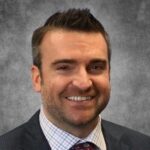 Pilot Study Evaluating the Elasticity and Shear Wave Modulus (Stiffness) of the Median Nerve in Patients with Mild to Moderate Idiopathic Carpal Tunnel Syndrome Receiving OMT and Conservative Therapy | Roland E. Gazaille, III, DO, is a board-certified diagnostic radiologist with an interest in musculoskeletal imaging, including MRI and MSK ultrasound. He received his medical degree from the University of New England College of Osteopathic Medicine in 2005 and completed his diagnostic radiology residency at Grandview Medical Center in Dayton, Ohio in 2010 and a musculoskeletal radiology fellowship at Henry Ford Hospital in Detroit, Michigan in 2011. Dr. Gazaille has served as the program director of the Kettering Health Diagnostic Radiology Residency Program since 2014. He is a member of the Society of Skeletal Radiology (SSR), the Radiological Society of North America (RSNA), the American Roentgen Ray Society (ARRS) and the Association of Program Directors in Radiology (APDR). Dr. Gazaille is also a member and sits on the Board of Directors of the American Osteopathic College of Radiology (AOCR). Dr. Gazaille has been with Kettering Network Radiologists, Inc. since 2005.
Pilot Study Evaluating the Elasticity and Shear Wave Modulus (Stiffness) of the Median Nerve in Patients with Mild to Moderate Idiopathic Carpal Tunnel Syndrome Receiving OMT and Conservative Therapy | Roland E. Gazaille, III, DO, is a board-certified diagnostic radiologist with an interest in musculoskeletal imaging, including MRI and MSK ultrasound. He received his medical degree from the University of New England College of Osteopathic Medicine in 2005 and completed his diagnostic radiology residency at Grandview Medical Center in Dayton, Ohio in 2010 and a musculoskeletal radiology fellowship at Henry Ford Hospital in Detroit, Michigan in 2011. Dr. Gazaille has served as the program director of the Kettering Health Diagnostic Radiology Residency Program since 2014. He is a member of the Society of Skeletal Radiology (SSR), the Radiological Society of North America (RSNA), the American Roentgen Ray Society (ARRS) and the Association of Program Directors in Radiology (APDR). Dr. Gazaille is also a member and sits on the Board of Directors of the American Osteopathic College of Radiology (AOCR). Dr. Gazaille has been with Kettering Network Radiologists, Inc. since 2005. Role of OMT in the Management of Persistent Post-COVID-19 Symptoms – A Pilot Prospective Cohort Study | Brian F. Degenhardt, DO, is a 1989 graduate of the Des Moines University College of Osteopathic Medicine. He completed his residency in osteopathic manipulative medicine (OMM) at Northeast Regional Medical Center and is board certified in neuromusculoskeletal medicine/osteopathic manipulative medicine. Dr. Degenhardt is the assistant vice president for osteopathic research at A.T. Still University Kirksville College of Osteopathic Medicine, co-director of the Center for Research in OMM at the A.T. Still Research Institute, an Osteopathic Heritage Foundation Endowed Chair and the director of DO-Touch.NET, an international practice-based research network assessing the clinical usefulness and safety of OMM. He oversees numerous areas of research with a primary focus on directing research in the areas of palpatory diagnosis and OMT. His published work demonstrates a broad scope of research, evaluating the reliability of palpatory diagnostic tests, objectifying somatic dysfunction, evaluating the association of biomarkers and pain with OMT, health benefits of wellness programs, the impact of OMT on a variety of conditions such as otitis media, pneumonia in the elderly, chronic obstructive pulmonary disease and the use of raster-stereography in assessing posture.
Role of OMT in the Management of Persistent Post-COVID-19 Symptoms – A Pilot Prospective Cohort Study | Brian F. Degenhardt, DO, is a 1989 graduate of the Des Moines University College of Osteopathic Medicine. He completed his residency in osteopathic manipulative medicine (OMM) at Northeast Regional Medical Center and is board certified in neuromusculoskeletal medicine/osteopathic manipulative medicine. Dr. Degenhardt is the assistant vice president for osteopathic research at A.T. Still University Kirksville College of Osteopathic Medicine, co-director of the Center for Research in OMM at the A.T. Still Research Institute, an Osteopathic Heritage Foundation Endowed Chair and the director of DO-Touch.NET, an international practice-based research network assessing the clinical usefulness and safety of OMM. He oversees numerous areas of research with a primary focus on directing research in the areas of palpatory diagnosis and OMT. His published work demonstrates a broad scope of research, evaluating the reliability of palpatory diagnostic tests, objectifying somatic dysfunction, evaluating the association of biomarkers and pain with OMT, health benefits of wellness programs, the impact of OMT on a variety of conditions such as otitis media, pneumonia in the elderly, chronic obstructive pulmonary disease and the use of raster-stereography in assessing posture. Urological National Surgical and Trauma Quality Improvement Projects | Young Son, DO, is currently a PGY-3 urology resident in Jefferson, New Jersey. He attended Pennsylvania State University for undergraduate studies in biology and completed medical school at Philadelphia College of Osteopathic Medicine. Currently, he is investigating machine learning and its utilization with large national databases. The objectivity of random forest models or neural networks allows to rid investigator bias for postoperative outcomes. He is also currently working with patients that underwent prostatectomy, nephrectomy or cystectomy.
Urological National Surgical and Trauma Quality Improvement Projects | Young Son, DO, is currently a PGY-3 urology resident in Jefferson, New Jersey. He attended Pennsylvania State University for undergraduate studies in biology and completed medical school at Philadelphia College of Osteopathic Medicine. Currently, he is investigating machine learning and its utilization with large national databases. The objectivity of random forest models or neural networks allows to rid investigator bias for postoperative outcomes. He is also currently working with patients that underwent prostatectomy, nephrectomy or cystectomy.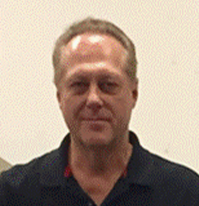 Changes in Pain, Spasticity, and Quality of Life after use of Counterstrain Osteopathic Manipulative Treatment in Individuals with Spinal Cord Injury | David Dolbow, DPT, PhD, RKT has over 33 years of experience working in rehabilitation medicine with the Veterans Affairs Medical System as a Kinesiotherapist, Exercise Physiologist, Physical Therapist and Physical Therapist Research Specialist. Dr. Dolbow has treated individuals with various physical conditions and has a Certification in Neurologic Clinic Practice. Dr. Dolbow has taught at the university level for eight and a half years (University of Southern Mississippi – four and a half years) and at William Carey University – four years). Over the past decade, Dr. Dolbow has been investigating the effects of spinal cord injury on functional mobility, body composition and the risk of secondary comorbidities. Dr. Dolbow’s research interests include improving the quality of life in those with spinal cord injuries and other paralytic conditions by improving functional mobility and decreasing secondary morbidities such as obesity and cardiometabolic diseases. Recently, Dr. Dolbow and Ajay Sharma, DO, have teamed up with students from the College of Osteopathic Medicine and Physical Therapy Department at William Carey University to study the effectiveness of osteopathic manual techniques in decreasing neurogenic pain after spinal cord injury.
Changes in Pain, Spasticity, and Quality of Life after use of Counterstrain Osteopathic Manipulative Treatment in Individuals with Spinal Cord Injury | David Dolbow, DPT, PhD, RKT has over 33 years of experience working in rehabilitation medicine with the Veterans Affairs Medical System as a Kinesiotherapist, Exercise Physiologist, Physical Therapist and Physical Therapist Research Specialist. Dr. Dolbow has treated individuals with various physical conditions and has a Certification in Neurologic Clinic Practice. Dr. Dolbow has taught at the university level for eight and a half years (University of Southern Mississippi – four and a half years) and at William Carey University – four years). Over the past decade, Dr. Dolbow has been investigating the effects of spinal cord injury on functional mobility, body composition and the risk of secondary comorbidities. Dr. Dolbow’s research interests include improving the quality of life in those with spinal cord injuries and other paralytic conditions by improving functional mobility and decreasing secondary morbidities such as obesity and cardiometabolic diseases. Recently, Dr. Dolbow and Ajay Sharma, DO, have teamed up with students from the College of Osteopathic Medicine and Physical Therapy Department at William Carey University to study the effectiveness of osteopathic manual techniques in decreasing neurogenic pain after spinal cord injury. Treating Chronic Cervicogenic Head and Neck Pain with Osteopathic Manipulation and Exercise Therapy | Richard Hallgren, PhD, received a PhD degree in Biomedical and Electrical Engineering from Iowa State University in 1974. His long-term research goal is to implement cost-effective treatment protocols to improve patient outcomes. His research team will test the combined effectiveness of OMT and focused exercise therapy to decrease headache measures of frequency, intensity and duration in a cohort of female patients diagnosed with chronic cervicogenic headaches.
Treating Chronic Cervicogenic Head and Neck Pain with Osteopathic Manipulation and Exercise Therapy | Richard Hallgren, PhD, received a PhD degree in Biomedical and Electrical Engineering from Iowa State University in 1974. His long-term research goal is to implement cost-effective treatment protocols to improve patient outcomes. His research team will test the combined effectiveness of OMT and focused exercise therapy to decrease headache measures of frequency, intensity and duration in a cohort of female patients diagnosed with chronic cervicogenic headaches.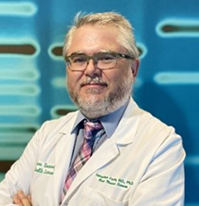 Serological Assessment of the Effect of Osteopathic Manipulative Treatments in Conjunction with COVID-19 Booster Shots | Sebastien Fuchs, MD, PhD, is an Associate Professor of Pharmacology at the College of Osteopathic Medicine of the Pacific (COMP) of Western University of Health Sciences in Pomona, California. Dr. Fuchs’ research focus has been the renin-angiotensin system for over two decades, which includes ACE-2, the receptor for the SARS-COV-2 virus.
Serological Assessment of the Effect of Osteopathic Manipulative Treatments in Conjunction with COVID-19 Booster Shots | Sebastien Fuchs, MD, PhD, is an Associate Professor of Pharmacology at the College of Osteopathic Medicine of the Pacific (COMP) of Western University of Health Sciences in Pomona, California. Dr. Fuchs’ research focus has been the renin-angiotensin system for over two decades, which includes ACE-2, the receptor for the SARS-COV-2 virus.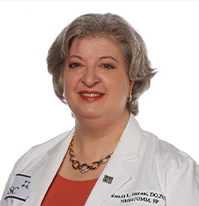 Use of High-Precision Phase Contrast MRI Flow Technique to Assess Changes in Cerebral Blood Flow Before and After OMT in Mild Cognitive Impairment | Kendi Hensel, DO, received her DO from Oklahoma State University College of Osteopathic Medicine. After completing a traditional rotating internship, she moved to the University of New England in Biddeford, Maine, and was one of the first graduates from a combined Family Practice and Neuromusculoskeletal Medicine residency. She returned to her native Texas in 2004 to join the faculty of the Texas College of Osteopathic Medicine (TCOM) at the University of North Texas Health Science Center. She has been an investigator and treatment provider on several OMM research studies. In 2006, she became the first DO to receive a K23 Award from the NIH-NCCIH. This project studied the effects of OMM on pregnant women. She received her PhD in OMM Clinical Research and Education in 2009 from UNTHSC-Graduate School of Biomedical Sciences. She served as the 2019-2020 President of the American Academy of Osteopathy, and served for six years as a Section Editor of the Journal of Osteopathic Medicine. She is currently involved in clinical, educational and research activities at TCOM and in national efforts to improve the evidence base and utilization of OMM. Her research interests include mechanistic and clinical effectiveness studies of OMM.
Use of High-Precision Phase Contrast MRI Flow Technique to Assess Changes in Cerebral Blood Flow Before and After OMT in Mild Cognitive Impairment | Kendi Hensel, DO, received her DO from Oklahoma State University College of Osteopathic Medicine. After completing a traditional rotating internship, she moved to the University of New England in Biddeford, Maine, and was one of the first graduates from a combined Family Practice and Neuromusculoskeletal Medicine residency. She returned to her native Texas in 2004 to join the faculty of the Texas College of Osteopathic Medicine (TCOM) at the University of North Texas Health Science Center. She has been an investigator and treatment provider on several OMM research studies. In 2006, she became the first DO to receive a K23 Award from the NIH-NCCIH. This project studied the effects of OMM on pregnant women. She received her PhD in OMM Clinical Research and Education in 2009 from UNTHSC-Graduate School of Biomedical Sciences. She served as the 2019-2020 President of the American Academy of Osteopathy, and served for six years as a Section Editor of the Journal of Osteopathic Medicine. She is currently involved in clinical, educational and research activities at TCOM and in national efforts to improve the evidence base and utilization of OMM. Her research interests include mechanistic and clinical effectiveness studies of OMM.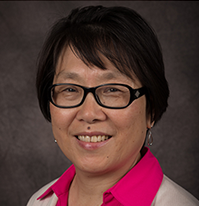 Quantitative Ultrasound Biomarkers to Assess Upper Trapezius Muscles in Patients with Chronic Neck Pain | Jing Gao, MD, FAIUM, is the Director of ultrasound in Research and Education at Rocky Vista University and adjunct research faculty at Weill Cornell Medicine. She completed her education in medicine, Chinese traditional medicine and radiology residency in 1976, 1980 and 1984, respectively. Before joining Rocky Vista University College of Osteopathic Medicine (RVUCOM) in 2017, she worked for New York-Presbyterian Hospital/Weill Cornell Medicine for almost three decades. She has strong experience leading clinical ultrasound research and teaching radiology residents and medical students. Her current research focuses on quantitative ultrasound to assess chronic pain, somatic dysfunction, OMT effect, cardiovascular function and NAFLD. She has presented research reports nationally and internationally. She has served as a member of RSNA/AIUM/QIBA committees of ultrasound volume blood flow (VBF) and pulse-echo quantitative ultrasound (PEQUS). She has also served as an editorial board member for three journals: Clinical Imaging (Elsevier), Journal of Ultrasound in Medicine (Wiley) and Ultrasound in Medicine and Biology (Elsevier). The list of her publications can be found
Quantitative Ultrasound Biomarkers to Assess Upper Trapezius Muscles in Patients with Chronic Neck Pain | Jing Gao, MD, FAIUM, is the Director of ultrasound in Research and Education at Rocky Vista University and adjunct research faculty at Weill Cornell Medicine. She completed her education in medicine, Chinese traditional medicine and radiology residency in 1976, 1980 and 1984, respectively. Before joining Rocky Vista University College of Osteopathic Medicine (RVUCOM) in 2017, she worked for New York-Presbyterian Hospital/Weill Cornell Medicine for almost three decades. She has strong experience leading clinical ultrasound research and teaching radiology residents and medical students. Her current research focuses on quantitative ultrasound to assess chronic pain, somatic dysfunction, OMT effect, cardiovascular function and NAFLD. She has presented research reports nationally and internationally. She has served as a member of RSNA/AIUM/QIBA committees of ultrasound volume blood flow (VBF) and pulse-echo quantitative ultrasound (PEQUS). She has also served as an editorial board member for three journals: Clinical Imaging (Elsevier), Journal of Ultrasound in Medicine (Wiley) and Ultrasound in Medicine and Biology (Elsevier). The list of her publications can be found 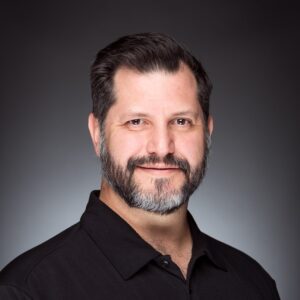 Augmentation of Immune Response to COVID-19 mRNA Vaccination Through Osteopathic Manipulative Treatment Including Lymphatic Pumps | Jesus Sanchez Jr., DO, MSHPE, MA, is a dual board-certified family practice and neuromusculoskeletal medicine/osteopathic manipulative medicine physician. He graduated from Western University of Health Sciences/College of Osteopathic Medicine of the Pacific (WesternU/COMP) in 2004 and is currently serving as a professor in the department of osteopathic medicine/neuromusculoskeletal medicine and family medicine at the COMP. He has been involved in areas of clinical medicine, teaching and research since 2008, having served as both assistant DME, +1NMM/OMM plus one residency program director and vice-chair of the NMM/OMM department. He has served as both member and chair of the Institutional Research Board at WesternU and has been actively able to develop, lead and collaborate in both educational and clinical research at WesternU/COMP. He is currently the principal investigator and lead for the research study on Augmentation of Immune Response to COVID-19 mRNA Vaccination Through Osteopathic Manipulative Treatment Including Lymphatic Pumps.
Augmentation of Immune Response to COVID-19 mRNA Vaccination Through Osteopathic Manipulative Treatment Including Lymphatic Pumps | Jesus Sanchez Jr., DO, MSHPE, MA, is a dual board-certified family practice and neuromusculoskeletal medicine/osteopathic manipulative medicine physician. He graduated from Western University of Health Sciences/College of Osteopathic Medicine of the Pacific (WesternU/COMP) in 2004 and is currently serving as a professor in the department of osteopathic medicine/neuromusculoskeletal medicine and family medicine at the COMP. He has been involved in areas of clinical medicine, teaching and research since 2008, having served as both assistant DME, +1NMM/OMM plus one residency program director and vice-chair of the NMM/OMM department. He has served as both member and chair of the Institutional Research Board at WesternU and has been actively able to develop, lead and collaborate in both educational and clinical research at WesternU/COMP. He is currently the principal investigator and lead for the research study on Augmentation of Immune Response to COVID-19 mRNA Vaccination Through Osteopathic Manipulative Treatment Including Lymphatic Pumps.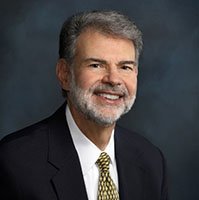 Osteopathic vs. Allopathic Physician Opioid Prescribing for Chronic Pain: A Longitudinal Study of Long-Term Outcomes and the Role of Osteopathic Manipulative Treatment | John C. Licciardone, DO, MS, MBA’s research focuses on chronic pain. He was the first recipient of a Regents Professorship at the Texas College of Osteopathic Medicine and holds the Osteopathic Heritage Foundation Distinguished Chair in Clinical Research in honor of Drs. David Richards and Benjamin Cohen. He directs the Osteopathic Research Center, including its “first-in-the-nation” PRECISION Pain Research Registry. He received an NIH Midcareer Investigator Award to conduct the OSTEOPATHIC Trial and is now Co-Investigator in the $14 million PACBACK Trial sponsored by NIH. He served on the Work Group that developed the Federal Pain Research Strategy and as a consultant to the World Health Organization. He gave the keynote address at Advancing Osteopathy 2008 to celebrate the 10th anniversary of the recognition of osteopaths in the UK’s National Health Service, including a pre-conference reception with His Majesty, King Charles III. He has met and advised two United States Surgeons General on the role of osteopathic physicians. Dr. Licciardone has received the Gutensohn-Denslow Award for his devoted lifetime service and contributions to research and education within the osteopathic profession.
Osteopathic vs. Allopathic Physician Opioid Prescribing for Chronic Pain: A Longitudinal Study of Long-Term Outcomes and the Role of Osteopathic Manipulative Treatment | John C. Licciardone, DO, MS, MBA’s research focuses on chronic pain. He was the first recipient of a Regents Professorship at the Texas College of Osteopathic Medicine and holds the Osteopathic Heritage Foundation Distinguished Chair in Clinical Research in honor of Drs. David Richards and Benjamin Cohen. He directs the Osteopathic Research Center, including its “first-in-the-nation” PRECISION Pain Research Registry. He received an NIH Midcareer Investigator Award to conduct the OSTEOPATHIC Trial and is now Co-Investigator in the $14 million PACBACK Trial sponsored by NIH. He served on the Work Group that developed the Federal Pain Research Strategy and as a consultant to the World Health Organization. He gave the keynote address at Advancing Osteopathy 2008 to celebrate the 10th anniversary of the recognition of osteopaths in the UK’s National Health Service, including a pre-conference reception with His Majesty, King Charles III. He has met and advised two United States Surgeons General on the role of osteopathic physicians. Dr. Licciardone has received the Gutensohn-Denslow Award for his devoted lifetime service and contributions to research and education within the osteopathic profession.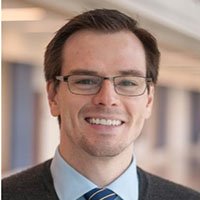 Soft Tissue Manipulative Therapy in Bone Anabolism | Jonathan Lowery, PhD, is a founding faculty member of the Marian University College of Osteopathic Medicine (MU-COM) in Indianapolis, Indiana. He completed a PhD in cell and developmental biology at Vanderbilt University and postdoctoral studies in developmental biology at Harvard University. At MU-COM, Dr. Lowery serves as the Director of Research Labs and teaches hypothalamic-pituitary endocrinology and skeletal physiology in the DO program. He also directs the Bone & Muscle Research Group (BMRG), a highly collaborative research collective with three other faculty members. They have trained more than sixty DO or MS students and produced more than thirty research publications since 2014. Dr. Lowery’s research interests center on understanding the mechanisms controlling bone remodeling with the goal of advancing potential strategies for reversing bone loss. He and his students collaborate with researchers at numerous US and international institutions. They are active in the American Society for Bone & Mineral Research, where Dr. Lowery serves as a committee chairperson.
Soft Tissue Manipulative Therapy in Bone Anabolism | Jonathan Lowery, PhD, is a founding faculty member of the Marian University College of Osteopathic Medicine (MU-COM) in Indianapolis, Indiana. He completed a PhD in cell and developmental biology at Vanderbilt University and postdoctoral studies in developmental biology at Harvard University. At MU-COM, Dr. Lowery serves as the Director of Research Labs and teaches hypothalamic-pituitary endocrinology and skeletal physiology in the DO program. He also directs the Bone & Muscle Research Group (BMRG), a highly collaborative research collective with three other faculty members. They have trained more than sixty DO or MS students and produced more than thirty research publications since 2014. Dr. Lowery’s research interests center on understanding the mechanisms controlling bone remodeling with the goal of advancing potential strategies for reversing bone loss. He and his students collaborate with researchers at numerous US and international institutions. They are active in the American Society for Bone & Mineral Research, where Dr. Lowery serves as a committee chairperson.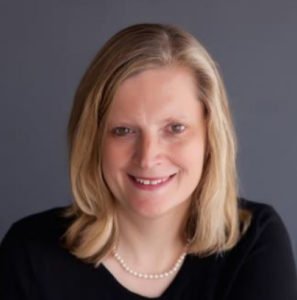 Osteopathic Philosophy and Patient Experience of Care Program | Rebecca Malouin, PhD, MPH, MS, is an associate professor in the Department of Family and Community Medicine and serves as Director of the Global Health Studies Program at Michigan State University. Dr. Malouin is a health services researcher with a specific interest in the experience of care within primary care. She has authored two books, published by the American Academy of Pediatrics, on the measurement of family and patient-centered care within primary care. She has received K01 and R01 funding from the Agency for Healthcare Research and Quality for research on patient-centered primary care and served as an evaluator for several primary care demonstration projects, both federally and privately funded. She has also served on study sections for the Agency for Healthcare Research and Quality, the National Institutes of Health, the Health Resources and Services Administration, the PatientCentered Outcomes Research Institute, the American Association of University Women International Fellowships, and the governments of Israel and New Zealand. Dr. Malouin served as an epidemiologist in the Michigan Department of Community Health and the Maryland Department of Health and Mental Hygiene and as a United States Peace Corps volunteer in Niger. Dr. Malouin received her PhD and MPH in international health from the Johns Hopkins Bloomberg School of Public Health. She also completed an MS in epidemiology from Michigan State University.
Osteopathic Philosophy and Patient Experience of Care Program | Rebecca Malouin, PhD, MPH, MS, is an associate professor in the Department of Family and Community Medicine and serves as Director of the Global Health Studies Program at Michigan State University. Dr. Malouin is a health services researcher with a specific interest in the experience of care within primary care. She has authored two books, published by the American Academy of Pediatrics, on the measurement of family and patient-centered care within primary care. She has received K01 and R01 funding from the Agency for Healthcare Research and Quality for research on patient-centered primary care and served as an evaluator for several primary care demonstration projects, both federally and privately funded. She has also served on study sections for the Agency for Healthcare Research and Quality, the National Institutes of Health, the Health Resources and Services Administration, the PatientCentered Outcomes Research Institute, the American Association of University Women International Fellowships, and the governments of Israel and New Zealand. Dr. Malouin served as an epidemiologist in the Michigan Department of Community Health and the Maryland Department of Health and Mental Hygiene and as a United States Peace Corps volunteer in Niger. Dr. Malouin received her PhD and MPH in international health from the Johns Hopkins Bloomberg School of Public Health. She also completed an MS in epidemiology from Michigan State University.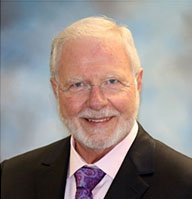 The Short and Long-Term Effect of OMT On Pain, Opioid Usage, Cost, and Psychosocial Factors in Adults with Chronic Low Back Pain | Clarence Nicodemus, DO, PhD, is a Professor, clinician, and Director of Clinical Research in the Department of Neuromusculoskeletal Medicine/OMM at Michigan State University College of Osteopathic Medicine (MSUCOM) and Director of the MSU Center for Neuromusculoskeletal Clinical Research (CNCR). Dr. Nicodemus graduated from MSUCOM in 2004 and completed his residency in Neuromusculoskeletal Medicine in 2007 with ABONMM board certification in 2010. He established a private, solo practice in Monterey, California, in 2008-2016. He was also on the Osteopathic Physicians and Surgeons of California board until he returned to MSUCOM in 2016 to take up his current position. Dr. Nicodemus earned his PhD in Biomedical Engineering from the University of California at Davis in 1993. He had a previous career as a research engineer in Rehabilitation in California, in Bioastronautics with Lockheed Engineering and Sciences Company at NASA/ Johnson Space Center in Houston, Texas. Here he was a Principal Scientist for six (6) years and spine biomechanics research where he was Assistant Professor of Orthopedics and Director of Orthopedic Spine research at the University of Texas Medical Branch Galveston for seven (7) years.
The Short and Long-Term Effect of OMT On Pain, Opioid Usage, Cost, and Psychosocial Factors in Adults with Chronic Low Back Pain | Clarence Nicodemus, DO, PhD, is a Professor, clinician, and Director of Clinical Research in the Department of Neuromusculoskeletal Medicine/OMM at Michigan State University College of Osteopathic Medicine (MSUCOM) and Director of the MSU Center for Neuromusculoskeletal Clinical Research (CNCR). Dr. Nicodemus graduated from MSUCOM in 2004 and completed his residency in Neuromusculoskeletal Medicine in 2007 with ABONMM board certification in 2010. He established a private, solo practice in Monterey, California, in 2008-2016. He was also on the Osteopathic Physicians and Surgeons of California board until he returned to MSUCOM in 2016 to take up his current position. Dr. Nicodemus earned his PhD in Biomedical Engineering from the University of California at Davis in 1993. He had a previous career as a research engineer in Rehabilitation in California, in Bioastronautics with Lockheed Engineering and Sciences Company at NASA/ Johnson Space Center in Houston, Texas. Here he was a Principal Scientist for six (6) years and spine biomechanics research where he was Assistant Professor of Orthopedics and Director of Orthopedic Spine research at the University of Texas Medical Branch Galveston for seven (7) years.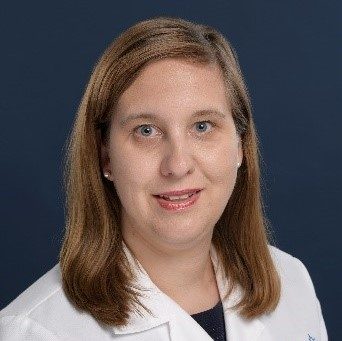 The Efficacy of Osteopathic Manipulative Treatment on Decreasing the Severity of Migraine Headaches | Abby Rhoads, DO, is a Family Medicine Physician and core faculty member in the department of Family Medicine at St. Luke’s University Health Network, as well as Director of Osteopathic Education for Family Medicine and Internal Medicine Program at Anderson Campus. In her role as Faculty, she has demonstrated commitment and advocacy for both the Osteopathic profession as well as Accreditation Council for Graduate Medical Education (ACGME) residency training. She has worked closely with American College of Osteopathic Family Physicians (ACOFP) in the past year to improve osteopathic care during the global COVID 19 pandemic with multiple publications and webinars. She was recently accepted as a member in the Osteopathic Recognition Milestones 2.0 work group, as she strongly advocates osteopathic education to continue in the ACGME learning environment. She is also involved in research as the Principle Investigator for two novel OMT clinical trials that are ongoing. In her practice, she advocates for principles of osteopathic medicine, preventative health and women’s health. She is often treating her patients with Osteopathic Manipulative Therapy to promote healing or teaching residents and medical students how to incorporate OMT into their daily practice.
The Efficacy of Osteopathic Manipulative Treatment on Decreasing the Severity of Migraine Headaches | Abby Rhoads, DO, is a Family Medicine Physician and core faculty member in the department of Family Medicine at St. Luke’s University Health Network, as well as Director of Osteopathic Education for Family Medicine and Internal Medicine Program at Anderson Campus. In her role as Faculty, she has demonstrated commitment and advocacy for both the Osteopathic profession as well as Accreditation Council for Graduate Medical Education (ACGME) residency training. She has worked closely with American College of Osteopathic Family Physicians (ACOFP) in the past year to improve osteopathic care during the global COVID 19 pandemic with multiple publications and webinars. She was recently accepted as a member in the Osteopathic Recognition Milestones 2.0 work group, as she strongly advocates osteopathic education to continue in the ACGME learning environment. She is also involved in research as the Principle Investigator for two novel OMT clinical trials that are ongoing. In her practice, she advocates for principles of osteopathic medicine, preventative health and women’s health. She is often treating her patients with Osteopathic Manipulative Therapy to promote healing or teaching residents and medical students how to incorporate OMT into their daily practice. The Effect of Osteopathic Manipulative Interventions on Opioid Use in Patients with Acute Pancreatitis | Cherylene Abalos, DO, is an Arizona native, obtaining her Bachelors of Science in Microbiology from Arizona State University in 2013. She completed medical school training at Rocky Vista University, College of Osteopathic Medicine, Colorado campus in 2018. She is a Health Professions Scholarship Program recipient with the Air Force and will serve the needs as a Captain of the Air Force after residency.
The Effect of Osteopathic Manipulative Interventions on Opioid Use in Patients with Acute Pancreatitis | Cherylene Abalos, DO, is an Arizona native, obtaining her Bachelors of Science in Microbiology from Arizona State University in 2013. She completed medical school training at Rocky Vista University, College of Osteopathic Medicine, Colorado campus in 2018. She is a Health Professions Scholarship Program recipient with the Air Force and will serve the needs as a Captain of the Air Force after residency.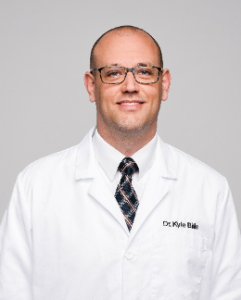 Neural Mechanisms of Osteopathic Spinal Manipulation on Opioid-Use Disorder and Associated Hyperalgesia | Kyle Bills, PhD, received his bachelors in exercise physiology and PhD in neuroscience from Brigham Young University and his doctorate in chiropractic (DC) degree from Parker University. He was awarded a Ruth L. Kirtchstein National Research Service Award from the National Center of Complementary and Integrative Health division of the National Institutes of Health as a post-doctoral fellow. His research focuses on peripheral mechanoreceptor-driven modulation of mesolimbic circuitry in the context of substance use disorders. Before full time research, Dr. Bills founded three different outpatient clinics focused on migraine headaches and traumatic brain injuries and served as a subject matter expert in the California Department of Workers’ Compensation Medical Unit. He is currently the Associate Dean for Research at Noorda College of Osteopathic Medicine and holds research and teaching appointments in the Department of Psychology at Brigham Young University and in the Department of Neurology at Parker University respectively.
Neural Mechanisms of Osteopathic Spinal Manipulation on Opioid-Use Disorder and Associated Hyperalgesia | Kyle Bills, PhD, received his bachelors in exercise physiology and PhD in neuroscience from Brigham Young University and his doctorate in chiropractic (DC) degree from Parker University. He was awarded a Ruth L. Kirtchstein National Research Service Award from the National Center of Complementary and Integrative Health division of the National Institutes of Health as a post-doctoral fellow. His research focuses on peripheral mechanoreceptor-driven modulation of mesolimbic circuitry in the context of substance use disorders. Before full time research, Dr. Bills founded three different outpatient clinics focused on migraine headaches and traumatic brain injuries and served as a subject matter expert in the California Department of Workers’ Compensation Medical Unit. He is currently the Associate Dean for Research at Noorda College of Osteopathic Medicine and holds research and teaching appointments in the Department of Psychology at Brigham Young University and in the Department of Neurology at Parker University respectively. The Role of Osteopathic Manipulative Medicine in Recovery from Concussions | DJacek Cholewicki, PhD, is a Walter F. Patenge Professor in spinal biomechanics. He directs the Michigan State University Center for Orthopedic Research (MSUCOR). Dr. Cholewicki received his PhD degree in Kinesiology from the University of Waterloo in Canada in 1994. From 1993 to 2007, Dr. Cholewicki worked in the Biomechanics Research Laboratory at Yale University School of Medicine, before being recruited to Michigan State University College of Osteopathic Medicine. His research interests lie in the areas of lumbar and cervical spine function, spine injury mechanisms, tissue loading, and biomechanical modeling using EMG. His current projects study motor control of the spine in the context of low back and neck pain, and optimal rehabilitation strategies, including OMM. Dr. Cholewicki is the recipient of the Bioengineering Research Prize Award for 2005 from the International Society for the Study of the Lumbar Spine (ISSLS) and the Rose Excellence in Research Award for the best research article of 2007 in the area of Orthopaedic Physical Therapy.
The Role of Osteopathic Manipulative Medicine in Recovery from Concussions | DJacek Cholewicki, PhD, is a Walter F. Patenge Professor in spinal biomechanics. He directs the Michigan State University Center for Orthopedic Research (MSUCOR). Dr. Cholewicki received his PhD degree in Kinesiology from the University of Waterloo in Canada in 1994. From 1993 to 2007, Dr. Cholewicki worked in the Biomechanics Research Laboratory at Yale University School of Medicine, before being recruited to Michigan State University College of Osteopathic Medicine. His research interests lie in the areas of lumbar and cervical spine function, spine injury mechanisms, tissue loading, and biomechanical modeling using EMG. His current projects study motor control of the spine in the context of low back and neck pain, and optimal rehabilitation strategies, including OMM. Dr. Cholewicki is the recipient of the Bioengineering Research Prize Award for 2005 from the International Society for the Study of the Lumbar Spine (ISSLS) and the Rose Excellence in Research Award for the best research article of 2007 in the area of Orthopaedic Physical Therapy.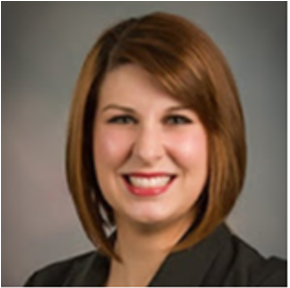 Assessing the Impact of Physician Pain on Motivation to Provide Longitudinal Osteopathic Manipulative Therapy to Patients and its Correlation to Opioid Prescribing (Co-branded award funded in collaboration with The American Osteopathic Foundation) | Erin Kay Jefferson, DO, completed her undergraduate studies at Indiana University Bloomington, where she received a Bachelor of Arts in Chemistry in 2007. After discovering her passion for medicine, she had the opportunity to attend Midwestern University Chicago College of Osteopathic Medicine in Downers Grove, Illinois. Following medical school graduation in 2011, Dr. Jefferson moved back to Indiana to complete her residency at Fort Wayne Medical Education Program. During her time in residency, she served as both Curricular Co-Chief and Co-Chief Resident and developed a love for academic medicine and mentor-ship. Upon completion of her residency training in 2014, Dr. Jefferson worked in both rural and suburban clinical practice for five years. In 2019, she elected to return to Fort Wayne Medical Education Program as Medical Director and Associate Program Director. Dr. Jefferson is enthusiastic about returning to a teaching environment that will foster both clinical acumen and compassionate care. She is passionate about her role in the Osteopathic profession and looks forward to engaging young physicians with an emphasis on scholarly activity.
Assessing the Impact of Physician Pain on Motivation to Provide Longitudinal Osteopathic Manipulative Therapy to Patients and its Correlation to Opioid Prescribing (Co-branded award funded in collaboration with The American Osteopathic Foundation) | Erin Kay Jefferson, DO, completed her undergraduate studies at Indiana University Bloomington, where she received a Bachelor of Arts in Chemistry in 2007. After discovering her passion for medicine, she had the opportunity to attend Midwestern University Chicago College of Osteopathic Medicine in Downers Grove, Illinois. Following medical school graduation in 2011, Dr. Jefferson moved back to Indiana to complete her residency at Fort Wayne Medical Education Program. During her time in residency, she served as both Curricular Co-Chief and Co-Chief Resident and developed a love for academic medicine and mentor-ship. Upon completion of her residency training in 2014, Dr. Jefferson worked in both rural and suburban clinical practice for five years. In 2019, she elected to return to Fort Wayne Medical Education Program as Medical Director and Associate Program Director. Dr. Jefferson is enthusiastic about returning to a teaching environment that will foster both clinical acumen and compassionate care. She is passionate about her role in the Osteopathic profession and looks forward to engaging young physicians with an emphasis on scholarly activity.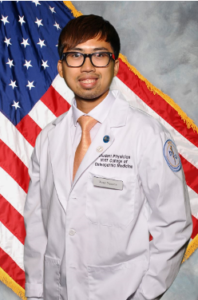 The Functional Role of FUNDC1-Mediated Mitophagy in Doxorubicin-Induced Cardiotoxicity | Student Doctor Nguyen is a first year osteopathic medical student from the New York Institute of Technology College of Osteopathic Medicine (NYITCOM) who is deeply passionate about biomedical research. He has been working in a lab ever since he was an undergraduate student at Columbia University in the department of biomedical engineering. After graduation, Student Doctor Nguyen worked as a research technician at the Massachusetts General Hospital (MGH) Cancer Center in Dr. David Ting’s lab studying next generation sequencing of RNA from circulating tumor cells to further confirm my interest in a career in academic medicine. His drive for research stems from my deep curiosity in finding new answers to complex biological problems. After finishing his time in that lab and prior to starting at NYITCOM, Student Doctor Nguyen was fortunate enough to start working in his current lab under the guidance of Dr. Qiangrong Liang, the summer before his first semester of medical school. Overall, Student Doctor Nguyen is proud of his osteopathic roots and hopes to use all the skills learned one day and translate it effectively into a career of taking great care of patients while also tackling the many mysteries to be discovered in medicine.
The Functional Role of FUNDC1-Mediated Mitophagy in Doxorubicin-Induced Cardiotoxicity | Student Doctor Nguyen is a first year osteopathic medical student from the New York Institute of Technology College of Osteopathic Medicine (NYITCOM) who is deeply passionate about biomedical research. He has been working in a lab ever since he was an undergraduate student at Columbia University in the department of biomedical engineering. After graduation, Student Doctor Nguyen worked as a research technician at the Massachusetts General Hospital (MGH) Cancer Center in Dr. David Ting’s lab studying next generation sequencing of RNA from circulating tumor cells to further confirm my interest in a career in academic medicine. His drive for research stems from my deep curiosity in finding new answers to complex biological problems. After finishing his time in that lab and prior to starting at NYITCOM, Student Doctor Nguyen was fortunate enough to start working in his current lab under the guidance of Dr. Qiangrong Liang, the summer before his first semester of medical school. Overall, Student Doctor Nguyen is proud of his osteopathic roots and hopes to use all the skills learned one day and translate it effectively into a career of taking great care of patients while also tackling the many mysteries to be discovered in medicine.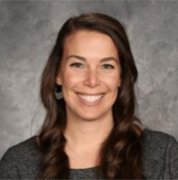 Exploring Osteopathic Medicine as an Effective Adjunctive Therapy for Pediatric Oncology Patients (OMET) | Jennifer Ashley Belsky, DO, MS, is a hematology/oncology/BMT physician fellow at Nationwide Children’s Hospital in Columbus, Ohio, and a graduate of the Ohio University Heritage College of Osteopathic Medicine. Her current research focuses on providing better supportive care options for children suffering from chemotherapy side effects. Special funding for this project was provided by the Dale Dodson Educational Fund.
Exploring Osteopathic Medicine as an Effective Adjunctive Therapy for Pediatric Oncology Patients (OMET) | Jennifer Ashley Belsky, DO, MS, is a hematology/oncology/BMT physician fellow at Nationwide Children’s Hospital in Columbus, Ohio, and a graduate of the Ohio University Heritage College of Osteopathic Medicine. Her current research focuses on providing better supportive care options for children suffering from chemotherapy side effects. Special funding for this project was provided by the Dale Dodson Educational Fund.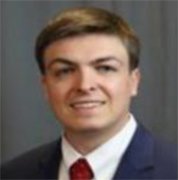 The Effect of Facial Effleurage on Complement C3 in Patients with Acute Rhinosinusitis | Kyle Burke received his undergraduate degree in Biomedical Sciences from the Rochester Institute of Technology in May of 2015. Currently, he is a second-year osteopathic medical student at the Edward Via College of Osteopathic Medicine – Carolinas Campus (VCOM–CC). Burke worked at the Brigham and Women’s Hospital in Boston, MA for two years following graduation. He worked with Clemens Scherzer, MD, on the Harvard Biomarkers Study as a Translational Study Coordinator where he performed clinical research visits and sample processing. Burke is currently working with Jillian Bradley, OD, at VCOM–CC as an Osteopathic Student Researcher on her project “The Effect of Facial Effleurage on Acute Rhinosinusitis.”
The Effect of Facial Effleurage on Complement C3 in Patients with Acute Rhinosinusitis | Kyle Burke received his undergraduate degree in Biomedical Sciences from the Rochester Institute of Technology in May of 2015. Currently, he is a second-year osteopathic medical student at the Edward Via College of Osteopathic Medicine – Carolinas Campus (VCOM–CC). Burke worked at the Brigham and Women’s Hospital in Boston, MA for two years following graduation. He worked with Clemens Scherzer, MD, on the Harvard Biomarkers Study as a Translational Study Coordinator where he performed clinical research visits and sample processing. Burke is currently working with Jillian Bradley, OD, at VCOM–CC as an Osteopathic Student Researcher on her project “The Effect of Facial Effleurage on Acute Rhinosinusitis.”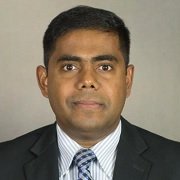 Clearance of Brain Metabolic Waste in a Natural Animal Model of Alzheimer’s Disease by Cranial Osteopathic Manipulation | Blaise M. Costa, PhD, is an associate professor of pharmacology at Edward Via College of Osteopathic Medicine in Virginia. He received a PhD degree in Psychopharmacology from the National Institute of Mental Health and Neurosciences, India in 2005. In this AOA funded project, Costa and his co-workers will study the molecular mechanism of Cranial Osteopathic Manipulative Medicine (COMM) and its potential to serve as an adjunct treatment strategy for Alzheimer’s disease.
Clearance of Brain Metabolic Waste in a Natural Animal Model of Alzheimer’s Disease by Cranial Osteopathic Manipulation | Blaise M. Costa, PhD, is an associate professor of pharmacology at Edward Via College of Osteopathic Medicine in Virginia. He received a PhD degree in Psychopharmacology from the National Institute of Mental Health and Neurosciences, India in 2005. In this AOA funded project, Costa and his co-workers will study the molecular mechanism of Cranial Osteopathic Manipulative Medicine (COMM) and its potential to serve as an adjunct treatment strategy for Alzheimer’s disease.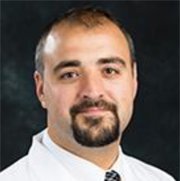 Determining the Effect of Biological Sex and Therapy on Diet-Induced Alterations in Liver and Kidney Health in Mice | Joseph Christopher Gigliotti, PhD, is an Assistant Professor of Physiology at Liberty University College of Osteopathic Medicine. He has received recognition for past research projects from several organizations, including the Institute of Food Technologists and National Kidney Foundation. Dr. Gigliotti’s current research is focused on understanding the immunopathology of kidney and liver diseases and how poor diet influences these processes.
Determining the Effect of Biological Sex and Therapy on Diet-Induced Alterations in Liver and Kidney Health in Mice | Joseph Christopher Gigliotti, PhD, is an Assistant Professor of Physiology at Liberty University College of Osteopathic Medicine. He has received recognition for past research projects from several organizations, including the Institute of Food Technologists and National Kidney Foundation. Dr. Gigliotti’s current research is focused on understanding the immunopathology of kidney and liver diseases and how poor diet influences these processes. Predictors of Stress, Anxiety, and Depression in Female Osteopathic Medical Students: A Prospective Cohort Study | Bhuma Krishnamachari, PhDbu, serves as Assistant Dean of Research and an Associate Professor of Clinical Specialties at the New York Institute of Technology College of Osteopathic Medicine. She recently completed a Health Policy Fellowship with Ohio State University. Special funding for this project was provided by the Dale Dodson Educational Fund.
Predictors of Stress, Anxiety, and Depression in Female Osteopathic Medical Students: A Prospective Cohort Study | Bhuma Krishnamachari, PhDbu, serves as Assistant Dean of Research and an Associate Professor of Clinical Specialties at the New York Institute of Technology College of Osteopathic Medicine. She recently completed a Health Policy Fellowship with Ohio State University. Special funding for this project was provided by the Dale Dodson Educational Fund.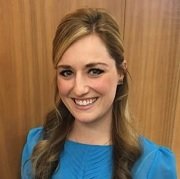 Osteopathic Manipulative Treatment vs. Standard Therapy in the Management of Acute Neck and Low Back Pain in the Emergency Department | Alexis Marie LaPietra, DO, FACEP, FAAEM, is the Medical Director of the Emergency Medicine Pain Management Program and the Fellowship Director of the Emergency Medicine Pain Management Fellowship and Emergency Medicine Mental Health and Addiction Medicine Fellowship at St Joseph’s Health in Paterson, New Jersey. Co-branded award funded in collaboration with The American Osteopathic Foundation.
Osteopathic Manipulative Treatment vs. Standard Therapy in the Management of Acute Neck and Low Back Pain in the Emergency Department | Alexis Marie LaPietra, DO, FACEP, FAAEM, is the Medical Director of the Emergency Medicine Pain Management Program and the Fellowship Director of the Emergency Medicine Pain Management Fellowship and Emergency Medicine Mental Health and Addiction Medicine Fellowship at St Joseph’s Health in Paterson, New Jersey. Co-branded award funded in collaboration with The American Osteopathic Foundation. Optimizing Chronic Pain Management through Patient Engagement with Quality of Life Measures: A Randomized Controlled Trial | John C. Licciardone, DO, MS, MBA, holds the Osteopathic Heritage Foundation Richards-Cohen Distinguished Chair in Clinical Research at the University of North Texas Health Science Center. He directs the Osteopathic Research Center and its PRECISION Pain Research Registry, which studies precision medicine and biopsychosocial aspects of pain.
Optimizing Chronic Pain Management through Patient Engagement with Quality of Life Measures: A Randomized Controlled Trial | John C. Licciardone, DO, MS, MBA, holds the Osteopathic Heritage Foundation Richards-Cohen Distinguished Chair in Clinical Research at the University of North Texas Health Science Center. He directs the Osteopathic Research Center and its PRECISION Pain Research Registry, which studies precision medicine and biopsychosocial aspects of pain.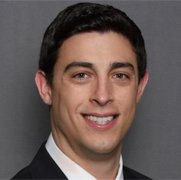 Role of ERAP1 in Tr1 Cell Biology and Ankylosing Spondylitis | Student Doctor O’Connell is a fourth year DO-PhD student at Michigan State University College of Osteopathic Medicine. He is working to uncover mechanisms underlying chronic autoimmune disorders, notably, Ankylosing Spondylitis. These studies will focus on the role of an important anti-inflammatory cell termed Type 1 Regulatory T cells (Tr1 cells), which potentially play an important role in joint inflammation. Special funding received from the AT Still Foundation.
Role of ERAP1 in Tr1 Cell Biology and Ankylosing Spondylitis | Student Doctor O’Connell is a fourth year DO-PhD student at Michigan State University College of Osteopathic Medicine. He is working to uncover mechanisms underlying chronic autoimmune disorders, notably, Ankylosing Spondylitis. These studies will focus on the role of an important anti-inflammatory cell termed Type 1 Regulatory T cells (Tr1 cells), which potentially play an important role in joint inflammation. Special funding received from the AT Still Foundation.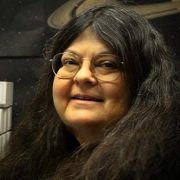 Biochemical Effects of Osteopathic Manipulation on Neuronal Function and Survival | Beverly A. Rzigalinski, PhD, is a professor of Pharmacology at the Edward Via College of Osteopathic Medicine. In this current grant, she is working to decipher the biochemical effects of osteopathic manipulation on the neuron, to unravel the cellular mechanisms by which osteopathic manipulation exerts its beneficial effects on the human. Special funding received from the AT Still Foundation.
Biochemical Effects of Osteopathic Manipulation on Neuronal Function and Survival | Beverly A. Rzigalinski, PhD, is a professor of Pharmacology at the Edward Via College of Osteopathic Medicine. In this current grant, she is working to decipher the biochemical effects of osteopathic manipulation on the neuron, to unravel the cellular mechanisms by which osteopathic manipulation exerts its beneficial effects on the human. Special funding received from the AT Still Foundation.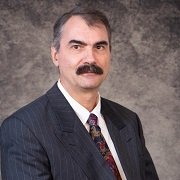 Anti-Inflammatory Actions of OMT – Role of the Cholinergic Anti-Inflammatory Reflex and Translocation of Immune Cells from Reticular Organs to the Systemic Circulation | Harald Martin Stauss, MD, PhD, is an Associate Professor of Pharmacology at Burrell College of Osteopathic Medicine. In the AOA-funded research project, Dr. Stauss will test the hypothesis that cranial OMT techniques elicit anti-inflammatory actions by increasing parasympathetic activity and thereby activating the cholinergic anti-inflammatory pathway. Special funding received from the Dale Dodson Educational Fund.
Anti-Inflammatory Actions of OMT – Role of the Cholinergic Anti-Inflammatory Reflex and Translocation of Immune Cells from Reticular Organs to the Systemic Circulation | Harald Martin Stauss, MD, PhD, is an Associate Professor of Pharmacology at Burrell College of Osteopathic Medicine. In the AOA-funded research project, Dr. Stauss will test the hypothesis that cranial OMT techniques elicit anti-inflammatory actions by increasing parasympathetic activity and thereby activating the cholinergic anti-inflammatory pathway. Special funding received from the Dale Dodson Educational Fund. Leveling the Playing Field: Evaluating How Prerequisite Classes Affects Perceived Stress Levels in Medical Students | Kathleen Ackert, OMS II, graduated from the Philadelphia College of Osteopathic Medicine in 2020 and is currently a resident in Obstetrics & Gynecology at St. Luke’s University Health Network in Bethlehem, PA. In addition to working and studying hard to be a well-rounded and compassionate physician, she is also interested in research, mainly QI projects surrounding medical education. She credits her start in research to the AOA training grant that she received as a second-year medical student. When Dr. Ackert is not holding down the fort on labor & delivery or in the operating room, you can find her at local independent coffee shops writing narrative medicine pieces, at her CrossFit gym, or working on her power ranking of Philadelphia’s best brussels sprouts. Feel free to follow along on Instagram at @CaffeineWithKathleen or on Twitter at @AckertKathleen.
Leveling the Playing Field: Evaluating How Prerequisite Classes Affects Perceived Stress Levels in Medical Students | Kathleen Ackert, OMS II, graduated from the Philadelphia College of Osteopathic Medicine in 2020 and is currently a resident in Obstetrics & Gynecology at St. Luke’s University Health Network in Bethlehem, PA. In addition to working and studying hard to be a well-rounded and compassionate physician, she is also interested in research, mainly QI projects surrounding medical education. She credits her start in research to the AOA training grant that she received as a second-year medical student. When Dr. Ackert is not holding down the fort on labor & delivery or in the operating room, you can find her at local independent coffee shops writing narrative medicine pieces, at her CrossFit gym, or working on her power ranking of Philadelphia’s best brussels sprouts. Feel free to follow along on Instagram at @CaffeineWithKathleen or on Twitter at @AckertKathleen.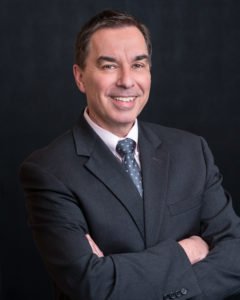 Meditation, Alignment with the Osteopathic Philosophy and Empathy in Osteopathic Medical Students: A Randomized Controlled Interventional Trial | Jerry Balentine, DO, received his undergraduate degree from McDaniel College in Westminster, Maryland. He attended medical school at the Philadelphia College of Osteopathic Medicine, graduating in 1983. He completed his internship at St. Joseph’s Hospital in Philadelphia and his Emergency Medicine residency at Lincoln Medical and Mental Health Center in the Bronx, where he served as chief resident. In 1992 Dr. Balentine started practicing Emergency Medicine at St. Barnabas Hospital in the Bronx where he served as Residency Director and Department Co-Director.
Meditation, Alignment with the Osteopathic Philosophy and Empathy in Osteopathic Medical Students: A Randomized Controlled Interventional Trial | Jerry Balentine, DO, received his undergraduate degree from McDaniel College in Westminster, Maryland. He attended medical school at the Philadelphia College of Osteopathic Medicine, graduating in 1983. He completed his internship at St. Joseph’s Hospital in Philadelphia and his Emergency Medicine residency at Lincoln Medical and Mental Health Center in the Bronx, where he served as chief resident. In 1992 Dr. Balentine started practicing Emergency Medicine at St. Barnabas Hospital in the Bronx where he served as Residency Director and Department Co-Director.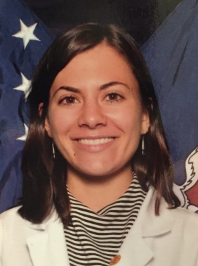 The Cardioprotective Benefits of Prolonged Fasting | Katrina Bantis, OMS IV, is a fourth year medical student at NYIT-COM and will be applying to anesthesiology residency programs this fall. She is very grateful for the AOA’s support of her long-term research project entitled “The Cardioprotective Benefits of Prolonged Fasting.” Katrina is interested in pursuing a career in academic medicine, and, as such, she has pursued various research (both basic and clinical) and teaching opportunities throughout college and medical school. Of special note, Katrina was accepted into a merit-based scholarship program at her medical school (the Academic Medicine Scholars Program) that primes students for careers in academic medicine, providing her with significant protected research time to carry out this AOA-funded project as well as ample graduate-level teaching opportunities. Katrina is looking forward to returning to Dr. Qiangrong Liang’s (her research advisor) lab this fall.to complete her cardiovascular disease project.
The Cardioprotective Benefits of Prolonged Fasting | Katrina Bantis, OMS IV, is a fourth year medical student at NYIT-COM and will be applying to anesthesiology residency programs this fall. She is very grateful for the AOA’s support of her long-term research project entitled “The Cardioprotective Benefits of Prolonged Fasting.” Katrina is interested in pursuing a career in academic medicine, and, as such, she has pursued various research (both basic and clinical) and teaching opportunities throughout college and medical school. Of special note, Katrina was accepted into a merit-based scholarship program at her medical school (the Academic Medicine Scholars Program) that primes students for careers in academic medicine, providing her with significant protected research time to carry out this AOA-funded project as well as ample graduate-level teaching opportunities. Katrina is looking forward to returning to Dr. Qiangrong Liang’s (her research advisor) lab this fall.to complete her cardiovascular disease project. The Effects of Lymphatic Pump Treatment on The Immune Response During Acute Pneumonia | Lisa Hodge, PhD, is an Associate Professor in the Department of Physiology and Anatomy and the Director of the Master of Medical Sciences Program at the University of North Texas Health Science Center in Fort Worth, Texas. Her lab researches the effect of osteopathic manipulative medicine therapies (OMT) on the lymphatic and immune systems. By stimulating the lymphatic system, OMT may aid to heal diseased tissue by boosting the immune system and draining inflammatory mediators, dead cells, microbes, and toxins from the tissue. Her research has been supported by the National Institutes of Health, the American Osteopathic Association, and the American Academy of Osteopathy.
The Effects of Lymphatic Pump Treatment on The Immune Response During Acute Pneumonia | Lisa Hodge, PhD, is an Associate Professor in the Department of Physiology and Anatomy and the Director of the Master of Medical Sciences Program at the University of North Texas Health Science Center in Fort Worth, Texas. Her lab researches the effect of osteopathic manipulative medicine therapies (OMT) on the lymphatic and immune systems. By stimulating the lymphatic system, OMT may aid to heal diseased tissue by boosting the immune system and draining inflammatory mediators, dead cells, microbes, and toxins from the tissue. Her research has been supported by the National Institutes of Health, the American Osteopathic Association, and the American Academy of Osteopathy.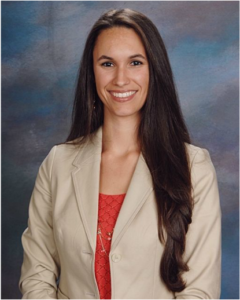 Effects of OMT on Return to Play Post Concussion | Alessandra Posey, DO,
Effects of OMT on Return to Play Post Concussion | Alessandra Posey, DO,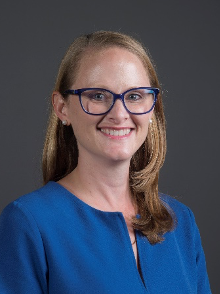 Achieving a High Level of Wellness by Focusing on the Impact of Diabetes Distress in Rural Appalachia | Elizabeth A. Beverly, PhD, is an Associate Professor in the Department of Primary Care at the Ohio University Heritage College of Osteopathic Medicine and the recipient of the Heritage Faculty Endowed Fellowship in Behavioral Diabetes, Osteopathic Heritage Foundation Ralph S. Licklider, DO, Research Endowment. Dr. Beverly graduated from The Pennsylvania State University with a Doctor of Philosophy degree in Biology and Behavioral Health and a minor in Gerontology in 2008. She completed a five-year postdoctoral fellowship in diabetes at Harvard Medical School with the Joslin Diabetes Center in 2013. Dr. Beverly conducts research focused on chronic disease management, with a specific emphasis on type 1 and type 2 diabetes. Her research program examines diabetes through a psychosocial lens, employing mixed methodology to examine complex challenges in a rural and underserved region in Appalachian Ohio. She is focused on implementing evidence-based interventions, including patient navigation, community health workers, and peer support networks, to address health disparities to improve clinical outcomes. In addition, she has employed focused ethnographic methods to better understand the culture of rural Appalachian Ohio and how this culture influences diabetes self-care. Recently, she examined diabetes distress levels in rural southeastern Ohio. Currently, she is collaborating with the OHIO Game Research and Immersive Design (GRID) Lab to improve healthcare providers’ and health professional students’ cultural self-efficacy, empathy and attitudes towards diabetes using virtual reality simulations.
Achieving a High Level of Wellness by Focusing on the Impact of Diabetes Distress in Rural Appalachia | Elizabeth A. Beverly, PhD, is an Associate Professor in the Department of Primary Care at the Ohio University Heritage College of Osteopathic Medicine and the recipient of the Heritage Faculty Endowed Fellowship in Behavioral Diabetes, Osteopathic Heritage Foundation Ralph S. Licklider, DO, Research Endowment. Dr. Beverly graduated from The Pennsylvania State University with a Doctor of Philosophy degree in Biology and Behavioral Health and a minor in Gerontology in 2008. She completed a five-year postdoctoral fellowship in diabetes at Harvard Medical School with the Joslin Diabetes Center in 2013. Dr. Beverly conducts research focused on chronic disease management, with a specific emphasis on type 1 and type 2 diabetes. Her research program examines diabetes through a psychosocial lens, employing mixed methodology to examine complex challenges in a rural and underserved region in Appalachian Ohio. She is focused on implementing evidence-based interventions, including patient navigation, community health workers, and peer support networks, to address health disparities to improve clinical outcomes. In addition, she has employed focused ethnographic methods to better understand the culture of rural Appalachian Ohio and how this culture influences diabetes self-care. Recently, she examined diabetes distress levels in rural southeastern Ohio. Currently, she is collaborating with the OHIO Game Research and Immersive Design (GRID) Lab to improve healthcare providers’ and health professional students’ cultural self-efficacy, empathy and attitudes towards diabetes using virtual reality simulations.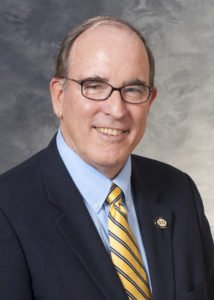 Effects of Osteopathic Manipulative Treatment on Gait Biomechanics in Parkinson’s Disease | Hollis King, DO, PhD, is a Professor of Family Medicine at UCSD School of medicine, and staff physician in the UC San Diego Health System OMT Service in the Center for Integrative Medicine, and the Osteopathic Center for Children. He is a Past President and Fellow of the American Academy of Osteopathy. He is the author of the chapter on “Osteopathy in the Cranial Field” in the past three editions of Foundations of Osteopathic Medicine. Dr. King is an active PI researcher on the effect of OMT on intraocular pressure lowering, on post-traumatic migraine cephalgia, and on plagiocephaly.
Effects of Osteopathic Manipulative Treatment on Gait Biomechanics in Parkinson’s Disease | Hollis King, DO, PhD, is a Professor of Family Medicine at UCSD School of medicine, and staff physician in the UC San Diego Health System OMT Service in the Center for Integrative Medicine, and the Osteopathic Center for Children. He is a Past President and Fellow of the American Academy of Osteopathy. He is the author of the chapter on “Osteopathy in the Cranial Field” in the past three editions of Foundations of Osteopathic Medicine. Dr. King is an active PI researcher on the effect of OMT on intraocular pressure lowering, on post-traumatic migraine cephalgia, and on plagiocephaly.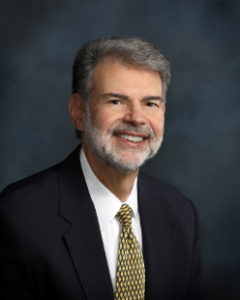 The Osteopathic Approach to Chronic Pain Management: Assessing its Biopsychosocial Processes and Relationships to Clinical Outcomes | John C. Licciardone, DO, MS, MBA, is a Regents Professor who holds the Osteopathic Heritage Foundation Richards-Cohen Distinguished Chair in Clinical Research at the University of North Texas Health Science Center. He directs the Osteopathic Research Center and its PRECISION Pain Research Registry, which studies precision medicine and biopsychosocial aspects of pain. He is a Co-Investigator in the PACBACK Trial sponsored by National Institutes of Health (NIH) and served on the Work Group that developed NIH’s Federal Pain Research Strategy. Other achievements relative to NIH include: receiving a Midcareer Investigator Award to direct the OSTEOPATHIC Trial and develop expertise in pain genetics, serving as an expert panelist in chronic pain, and completing a term on its National Advisory Council for Complementary and Integrative Health.
The Osteopathic Approach to Chronic Pain Management: Assessing its Biopsychosocial Processes and Relationships to Clinical Outcomes | John C. Licciardone, DO, MS, MBA, is a Regents Professor who holds the Osteopathic Heritage Foundation Richards-Cohen Distinguished Chair in Clinical Research at the University of North Texas Health Science Center. He directs the Osteopathic Research Center and its PRECISION Pain Research Registry, which studies precision medicine and biopsychosocial aspects of pain. He is a Co-Investigator in the PACBACK Trial sponsored by National Institutes of Health (NIH) and served on the Work Group that developed NIH’s Federal Pain Research Strategy. Other achievements relative to NIH include: receiving a Midcareer Investigator Award to direct the OSTEOPATHIC Trial and develop expertise in pain genetics, serving as an expert panelist in chronic pain, and completing a term on its National Advisory Council for Complementary and Integrative Health.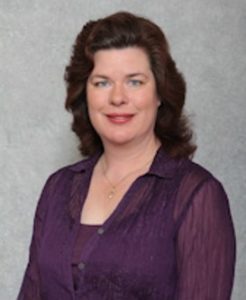 Reducing Inflammation with Osteopathic Treatment (RIOT Study) | Melissa G. Pearce, DO, is an Assistant Professor at Touro University College of Osteopathic Medicine-California (TUC COM). She is a Touro alumnus Board Certified in Family Medicine through the American Osteopathic Board of Family Practice, in Neuromusculoskeletal Medicine/Osteopathic Manipulative Medicine through the American Osteopathic Board of Neuromusculoskeletal Medicine, and a Diplomate of the American Board of Integrative and Holistic Medicine. In addition to teaching and clinical responsibilities, she is the Principal Investigator for the Reducing Inflammation with Osteopathic Treatment (RIOT) trial.
Reducing Inflammation with Osteopathic Treatment (RIOT Study) | Melissa G. Pearce, DO, is an Assistant Professor at Touro University College of Osteopathic Medicine-California (TUC COM). She is a Touro alumnus Board Certified in Family Medicine through the American Osteopathic Board of Family Practice, in Neuromusculoskeletal Medicine/Osteopathic Manipulative Medicine through the American Osteopathic Board of Neuromusculoskeletal Medicine, and a Diplomate of the American Board of Integrative and Holistic Medicine. In addition to teaching and clinical responsibilities, she is the Principal Investigator for the Reducing Inflammation with Osteopathic Treatment (RIOT) trial.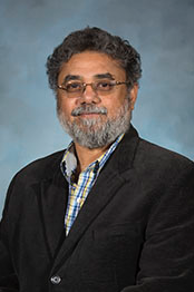 Development of a Serum Biomarker-Based Approach to Monitor Opioid Adherence and Minimize Substance Misuse in Chronic Pain Management | Venkat Venkataraman, MS, PhD, is an Assistant Professor in the Rowan University School of Osteopathic Medicine. There, he is an educator and Principal Investigator in the Department of Cell Biology & Neuroscience with an appointment in the Department of Rehabilitation Medicine, NeuroMusculoskeletal Institute. His research focuses on a mechanistic understanding of and potential biomarkers for neuronal pathology with emphasis on the role calcium signaling.
Development of a Serum Biomarker-Based Approach to Monitor Opioid Adherence and Minimize Substance Misuse in Chronic Pain Management | Venkat Venkataraman, MS, PhD, is an Assistant Professor in the Rowan University School of Osteopathic Medicine. There, he is an educator and Principal Investigator in the Department of Cell Biology & Neuroscience with an appointment in the Department of Rehabilitation Medicine, NeuroMusculoskeletal Institute. His research focuses on a mechanistic understanding of and potential biomarkers for neuronal pathology with emphasis on the role calcium signaling. Patient Experience of Osteopathic Physician Distinction and Empathy | Walter Hartwig, PhD, is an Associate Dean of Academic Affairs at Touro University College of Osteopathic Medicine in Vallejo, CA. He joined TUCOM at its inception in 1997 and has served in the roles of a faculty member (ongoing), Department Chair of Basic Sciences (2003-2009), Assistant Dean of Clinical Education (2010-2013), and Associate Dean of Academic Affairs (2013 – present). He served as Chair of Admissions from 2012-2017. He has published three books in research (The Primate Fossil Record, Cambridge University Press, 2002), teaching (Fundamental Anatomy, Lippincott, Williams and Wilkins, 2007) and service (Med School Rx: Getting In, Getting Through, and Getting On With Doctoring, Kaplan, 2009, 2011). His research interests include physical anthropology, pedagogy and the history of science.
Patient Experience of Osteopathic Physician Distinction and Empathy | Walter Hartwig, PhD, is an Associate Dean of Academic Affairs at Touro University College of Osteopathic Medicine in Vallejo, CA. He joined TUCOM at its inception in 1997 and has served in the roles of a faculty member (ongoing), Department Chair of Basic Sciences (2003-2009), Assistant Dean of Clinical Education (2010-2013), and Associate Dean of Academic Affairs (2013 – present). He served as Chair of Admissions from 2012-2017. He has published three books in research (The Primate Fossil Record, Cambridge University Press, 2002), teaching (Fundamental Anatomy, Lippincott, Williams and Wilkins, 2007) and service (Med School Rx: Getting In, Getting Through, and Getting On With Doctoring, Kaplan, 2009, 2011). His research interests include physical anthropology, pedagogy and the history of science.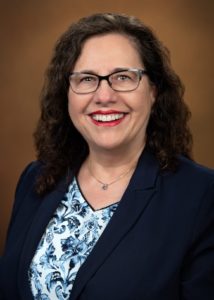 Osteopathic Clinical Care: A Multi-Level Analysis |
Osteopathic Clinical Care: A Multi-Level Analysis | 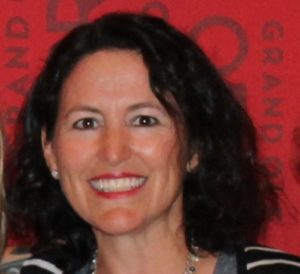 Prognosis ATSU-SOMA Choosing Wisely – Antibiotics | Joy H. Lewis, DO, PhD, FACP, is a Professor of Public Health and Internal Medicine at A.T. Still University, School of Osteopathic Medicine in Arizona (ATSU SOMA), where she chairs the Department of Public Health and directs the National Center for Community Health Research. She is the Director of SOMA’s DO/MPH Program and Course Director for OMSII Epidemiology, Biostatistics and Preventive Medicine courses. Dr. Lewis conducts community-based applied research in her areas of interest: social determinants of health, patient safety and preventive medicine. She also focuses on research related to technology-enhanced active learning and inter-professional education. Her work in Community Oriented Primary Care (COPC) combines Public Health and Primary Care. She has mentored Students and Residents on over 100 COPC projects. Dr. Lewis is the PI representing SOMA as part of the AMA Accelerating Change in Medical Education Consortium. She is the Principal Investigator for an approximately $2 million dollar 5-year Primary Care Training Enhancement grant from the Health Resources and Services Administration (HRSA). She is also a member of the Medicare Evidence Development and Coverage Advisory Committee (MEDCAC), which provides independent guidance and expert advice to the Centers for Medicare and Medicaid Services on specific clinical topics.
Prognosis ATSU-SOMA Choosing Wisely – Antibiotics | Joy H. Lewis, DO, PhD, FACP, is a Professor of Public Health and Internal Medicine at A.T. Still University, School of Osteopathic Medicine in Arizona (ATSU SOMA), where she chairs the Department of Public Health and directs the National Center for Community Health Research. She is the Director of SOMA’s DO/MPH Program and Course Director for OMSII Epidemiology, Biostatistics and Preventive Medicine courses. Dr. Lewis conducts community-based applied research in her areas of interest: social determinants of health, patient safety and preventive medicine. She also focuses on research related to technology-enhanced active learning and inter-professional education. Her work in Community Oriented Primary Care (COPC) combines Public Health and Primary Care. She has mentored Students and Residents on over 100 COPC projects. Dr. Lewis is the PI representing SOMA as part of the AMA Accelerating Change in Medical Education Consortium. She is the Principal Investigator for an approximately $2 million dollar 5-year Primary Care Training Enhancement grant from the Health Resources and Services Administration (HRSA). She is also a member of the Medicare Evidence Development and Coverage Advisory Committee (MEDCAC), which provides independent guidance and expert advice to the Centers for Medicare and Medicaid Services on specific clinical topics.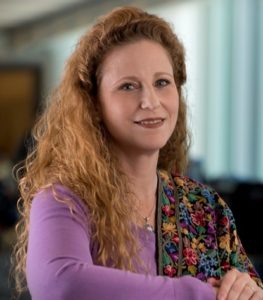 Identifying Risk Factors Associated with Declining Emotional Quotient (EQ) Traits During DO Training | Natalie A. Nevins, DO, MSHPE, serves as the Assistant Dean of Clinical Education at Western University of Health Sciences/College of Osteopathic Medicine of the Pacific. She is Board Certified in Family Medicine, Neuromusculoskeletal Medicine, and Osteopathic Manipulative Medicine. She holds a Masters Degree in Health Professions Education and is a Clinical Associate Professor of Family Medicine and Clinical Professor of Neuromusculoskeletal Medicine/Osteopathic Manipulative Medicine at Western University of Health Sciences, College of Osteopathic Medicine of the Pacific. She also serves as the Medical Director for the Amrit Davaa Wellness Center in West Hollywood, CA, where she maintains her private practice in NMM/OMM. Dr. Nevins is currently a Lieutenant Colonel in the US Army Reserve serving as the Command Flight Surgeon for the Army Reserve Aviation Command.
Identifying Risk Factors Associated with Declining Emotional Quotient (EQ) Traits During DO Training | Natalie A. Nevins, DO, MSHPE, serves as the Assistant Dean of Clinical Education at Western University of Health Sciences/College of Osteopathic Medicine of the Pacific. She is Board Certified in Family Medicine, Neuromusculoskeletal Medicine, and Osteopathic Manipulative Medicine. She holds a Masters Degree in Health Professions Education and is a Clinical Associate Professor of Family Medicine and Clinical Professor of Neuromusculoskeletal Medicine/Osteopathic Manipulative Medicine at Western University of Health Sciences, College of Osteopathic Medicine of the Pacific. She also serves as the Medical Director for the Amrit Davaa Wellness Center in West Hollywood, CA, where she maintains her private practice in NMM/OMM. Dr. Nevins is currently a Lieutenant Colonel in the US Army Reserve serving as the Command Flight Surgeon for the Army Reserve Aviation Command.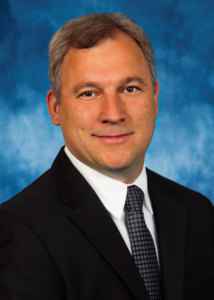 Lymphatic Pump Treatment of Inflammation in Rat-Adjuvant-Induced Arthritis | Michael V. Volin earned his Ph.D. in Pathology from The University of Chicago in 1996, followed by a post-doctoral fellowship at the Feinberg School of Medicine at Northwestern University until 2000. He then became a faculty member at the Illinois College of Optometry. In 2004 he moved to Midwestern University, where his research laboratory studies potential mediators and therapies of rheumatoid arthritis, and he teaches immunology and infectious disease to multiple graduate and medical professional programs. In 2011 he was appointed as Chair of the Microbiology and Immunology Department and in 2012, he was promoted to Professor. He is a member of The American Association of Immunology, The American College of Rheumatology, The American Society for Investigative Pathology, and The Association of Medical School Microbiology and Immunology Chairs. He was awarded funding from the National Institutes of Health for his work studying mediators of arthritis and The American Osteopathic Association for his work studying osteopathic manipulative therapy in rat models of arthritis. He has published over 50 articles and has been an invited speaker at national conferences.
Lymphatic Pump Treatment of Inflammation in Rat-Adjuvant-Induced Arthritis | Michael V. Volin earned his Ph.D. in Pathology from The University of Chicago in 1996, followed by a post-doctoral fellowship at the Feinberg School of Medicine at Northwestern University until 2000. He then became a faculty member at the Illinois College of Optometry. In 2004 he moved to Midwestern University, where his research laboratory studies potential mediators and therapies of rheumatoid arthritis, and he teaches immunology and infectious disease to multiple graduate and medical professional programs. In 2011 he was appointed as Chair of the Microbiology and Immunology Department and in 2012, he was promoted to Professor. He is a member of The American Association of Immunology, The American College of Rheumatology, The American Society for Investigative Pathology, and The Association of Medical School Microbiology and Immunology Chairs. He was awarded funding from the National Institutes of Health for his work studying mediators of arthritis and The American Osteopathic Association for his work studying osteopathic manipulative therapy in rat models of arthritis. He has published over 50 articles and has been an invited speaker at national conferences.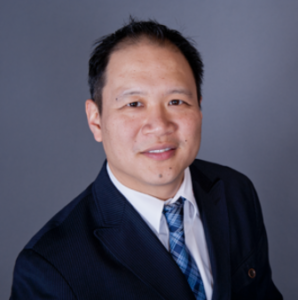 Effect of Osteopathic Manipulation on Balance Function, and Biomarkers in Parkinson’s Disease | Sheldon Yao, DO, is professor and chair of the Osteopathic Manipulative Medicine (OMM) department at The New York Institute of Technology -College of Osteopathic Medicine (NYIT-COM). He directs the NYIT – Center of OMM which conducts medical education and research focused on OMM. Dr. Yao is the principle investigator in several research studies investigating the effects of OMM on neurology disorders including Parkinson’s disease and sports related concussions.
Effect of Osteopathic Manipulation on Balance Function, and Biomarkers in Parkinson’s Disease | Sheldon Yao, DO, is professor and chair of the Osteopathic Manipulative Medicine (OMM) department at The New York Institute of Technology -College of Osteopathic Medicine (NYIT-COM). He directs the NYIT – Center of OMM which conducts medical education and research focused on OMM. Dr. Yao is the principle investigator in several research studies investigating the effects of OMM on neurology disorders including Parkinson’s disease and sports related concussions.